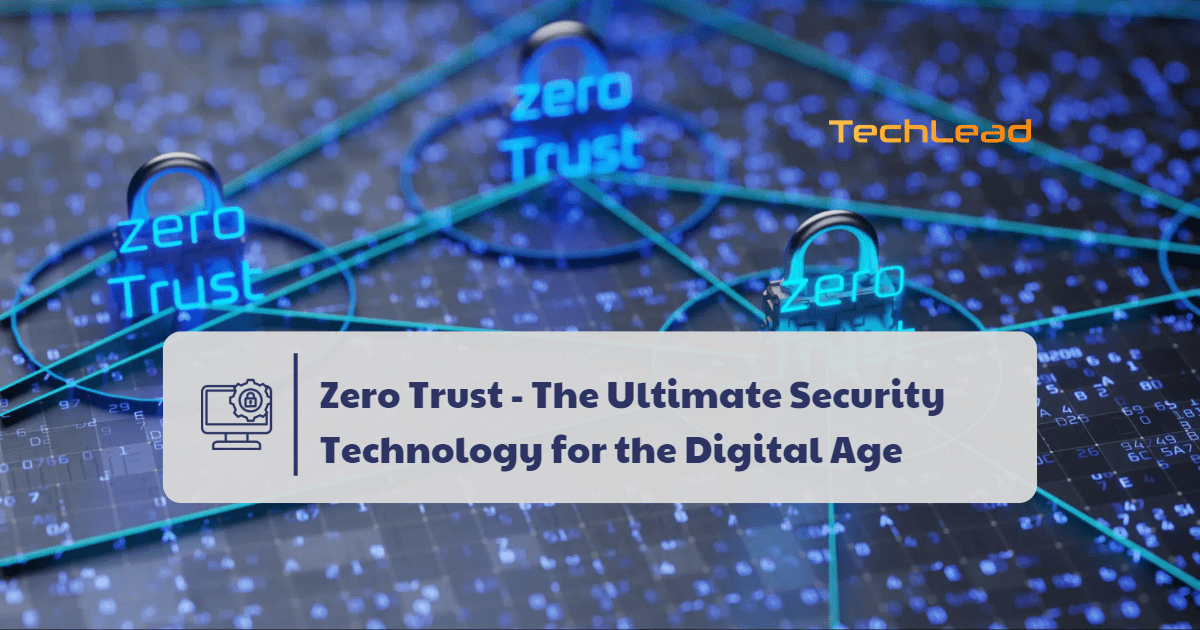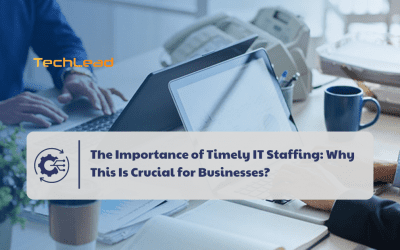In today’s digital era, traditional security measures are inadequate against sophisticated cyberattacks, emphasizing the need for advanced solutions. This is where the Zero Trust model comes into play. In this article, let’s explore “Zero Trust – The Ultimate Security Technology for the Digital Age”.
What is Zero Trust ?
1. Definition of Zero Trust
What is Zero Trust? (Collected)
Zero Trust is a security model based on the principle of strict access controls and the assumption that threats could be both external and internal to the network. Unlike traditional security models that rely on perimeter defenses, Zero Trust operates on the concept of “never trust, always verify.” This means that no entity, whether inside or outside the organization’s network, is trusted by default. Every access request is fully authenticated, authorized, and encrypted before granting access. The Zero Trust model mandates that all users, devices, and applications must prove their legitimacy and compliance with security policies at all times. This continuous verification ensures that only the right people and devices have access to the right resources under the right conditions.
2. History and Theoretical Foundations
The Zero Trust security model was first introduced by John Kindervag in 2010 while he was a principal analyst at Forrester Research. Kindervag’s insight was that traditional security models, which trusted entities inside the network, were flawed due to the increasing sophistication of cyber threats and the evolving nature of IT environments. This realization led to the development of Zero Trust, which fundamentally shifts the security paradigm from a trust-but-verify approach to a never-trust-always-verify approach.
The theoretical foundations of Zero Trust are rooted in several key security principles. One of the main principles is the principle of least privilege, which ensures that users and systems have the minimum level of access necessary to perform their functions. Another foundational theory is the need for micro-segmentation, which involves dividing networks into smaller, isolated segments to prevent lateral movement by attackers. Additionally, Zero Trust leverages continuous monitoring and real-time analytics to detect and respond to anomalies and threats. By integrating these principles, Zero Trust creates a more resilient security posture that adapts to the dynamic and complex nature of modern IT environments.
Core Components of Zero Trust
Zero Trust incorporates multiple layers of security, including robust user authentication, stringent device verification, and meticulous access management. Understanding these core components is essential to appreciating how Zero Trust fortifies an organization’s defenses in the digital age.
1. User Authentication
User Authentication (Collected)
User authentication is a fundamental component of the Zero Trust model, ensuring that access to resources is granted only to verified identities. Multi-Factor Authentication (MFA) is a critical method used within Zero Trust to enhance security. By requiring two or more verification factors—such as something the user knows (password), something the user has (security token), and something the user is (biometric verification)—MFA significantly reduces the risk of unauthorized access. This approach mitigates the weaknesses of relying solely on passwords, which can be easily compromised. In addition to MFA, Identity and Access Management (IAM) plays a pivotal role in Zero Trust. IAM systems manage and control user identities and their access rights, ensuring that users have appropriate access based on their roles. By continuously monitoring and adjusting permissions, IAM helps maintain the principle of least privilege, a cornerstone of Zero Trust, thereby minimizing potential attack vectors.
2. Device Authentication
In the Zero Trust architecture, securing the devices that access the network is as crucial as verifying user identities. Device authentication involves managing and controlling the devices that connect to corporate resources. This ensures that only compliant, secure devices are granted access, thus preventing compromised or rogue devices from infiltrating the network. Effective device management includes implementing policies that verify device health and security status before allowing access. This process often involves checking for up-to-date antivirus software, security patches, and adherence to organizational security policies. Ensuring device safety before accessing the system aligns with Zero Trust principles, as it prevents potential security breaches from devices that do not meet the security criteria, further fortifying the network against external threats.
3. Access Management
Access Management (Collected)
Access management within a Zero Trust framework is governed by the principle of least privilege, which stipulates that users and devices should only have the minimum level of access necessary to perform their functions. This principle is crucial in reducing the potential damage from compromised accounts or devices. Contextual and temporal access controls are also integral to Zero Trust. These controls evaluate the context of access requests, such as the user’s location, the time of the request, and the sensitivity of the requested resource, to make dynamic access decisions. By implementing these stringent access management practices, Zero Trust ensures that access is continually verified and adjusted based on real-time analysis, thereby maintaining robust security and preventing unauthorized access to sensitive data and systems.
In conclusion, the core components of Zero Trust—comprising user authentication, device authentication, and access management—are fundamental to its efficacy as a modern cybersecurity strategy. Through methods such as Multi-Factor Authentication (MFA) and Identity and Access Management (IAM), Zero Trust ensures that only verified users and secure devices gain access to sensitive resources. The principle of least privilege and dynamic access controls further enhance security by continuously adapting to contextual and temporal factors. By integrating these elements, Zero Trust provides a comprehensive and adaptive framework that significantly bolsters an organization’s ability to protect itself against sophisticated cyber threats, ensuring robust protection in an increasingly complex digital landscape.
Advantages and Challenges of Zero Trust
1. Advantages of Zero Trust
Advantages of Zero Trust (Collected)
Zero Trust security architecture offers several significant advantages, making it a compelling choice for modern enterprises seeking robust protection. One of the primary benefits is its enhanced protection against both internal and external threats. Unlike traditional security models that rely on a secure perimeter, Zero Trust assumes that threats can come from anywhere, both inside and outside the network. This approach ensures that all users and devices, regardless of their location, are continuously authenticated, authorized, and validated before accessing any resources. By doing so, it significantly reduces the risk of unauthorized access and data breaches, offering a more resilient defense against cyber threats.
Moreover, Zero Trust strengthens the ability to detect and respond swiftly to attacks. Traditional security models often struggle with delayed detection and response times due to their reliance on predefined trust zones. In contrast, Zero Trust continuously monitors and logs all activities, employing advanced analytics and machine learning to identify anomalies and potential threats in real-time. This proactive monitoring facilitates quicker incident response, minimizing the potential damage caused by cyberattacks. Organizations can therefore mitigate risks more effectively, maintaining a higher level of security and operational continuity.
Additionally, Zero Trust helps in minimizing risks and losses from security incidents. By enforcing the principle of least privilege, Zero Trust ensures that users and devices have only the minimum level of access necessary to perform their functions. This stringent access control reduces the attack surface and limits the potential impact of any compromised accounts or devices. As a result, even if an attacker gains access, their ability to move laterally within the network and inflict damage is significantly constrained. This containment strategy is crucial in reducing the financial and reputational impact of security breaches, making Zero Trust an invaluable asset in the cybersecurity arsenal.
2. Challenges of Zero Trust
Challenges of Zero Trust (Collected)
Despite its many advantages, implementing Zero Trust security architecture comes with its own set of challenges. One of the most significant hurdles is the high cost of deployment and maintenance. Establishing a Zero Trust framework requires substantial investments in advanced security technologies, continuous monitoring tools, and skilled personnel. The initial setup can be expensive, involving the integration of various security solutions such as multi-factor authentication (MFA), identity and access management (IAM), and endpoint security systems. Additionally, ongoing costs for maintenance, updates, and staff training can strain the financial resources of organizations, particularly smaller enterprises.
Another major challenge is the necessity to change existing workflows and corporate culture. Zero Trust requires a fundamental shift in how security is perceived and implemented within an organization. Traditional models often rely on implicit trust within the network, but Zero Trust demands a paradigm shift to continuous verification and strict access controls. This transition can be disruptive, requiring extensive reconfiguration of network architectures and applications. Employees need to adapt to new security protocols and practices, which can lead to resistance and a temporary decline in productivity. Overcoming these cultural and procedural barriers requires careful planning, communication, and change management strategies.
Furthermore, Zero Trust demands specialized knowledge and skills, posing a challenge for many organizations. Implementing and managing a Zero Trust environment requires cybersecurity professionals with expertise in areas such as network security, identity management, and threat intelligence. There is a growing demand for these skilled professionals, but the talent pool remains limited. Organizations may struggle to recruit and retain the necessary expertise, leading to potential gaps in their security posture. Continuous education and training programs are essential to develop the required competencies within the existing workforce, but this too adds to the overall cost and complexity of adopting Zero Trust.
In conclusion, while Zero Trust security architecture offers superior protection and risk mitigation, its implementation is not without significant challenges. High costs, the need for cultural and procedural shifts, and the requirement for specialized skills are substantial hurdles that organizations must navigate. However, with strategic planning and investment, the benefits of Zero Trust can far outweigh these challenges, providing a robust and adaptive security framework for the digital age.
Application of Zero Trust in Practice
1. Large Enterprises
In the realm of large enterprises, the adoption of Zero Trust has been pivotal in transforming traditional security paradigms into dynamic, risk-aware frameworks. Leading corporations such as Microsoft, Google, and Amazon have successfully implemented Zero Trust architectures, redefining their security postures from perimeter-based to identity-centric models. For instance, Microsoft’s implementation of Zero Trust encompasses rigorous identity verification protocols coupled with continuous monitoring and adaptive access controls. This approach ensures that every access attempt—whether from within the corporate network or external environments—is scrutinized and authenticated against established policies before granting access to resources.
A specific case study illustrating the effectiveness of Zero Trust involves Google’s BeyondCorp initiative. By eliminating the concept of a trusted internal network and treating all access attempts as potential threats, Google has achieved enhanced security without compromising productivity. Through meticulous device verification and context-aware access policies, BeyondCorp exemplifies how large enterprises can mitigate the risks associated with modern cyber threats while maintaining operational agility and scalability.
2. Small and Medium-sized Enterprises (SMEs)
For small and medium-sized enterprises (SMEs), adopting Zero Trust principles presents both opportunities and challenges. The primary benefit lies in bolstering cybersecurity defenses against sophisticated attacks, which are increasingly targeting smaller organizations due to perceived vulnerabilities. By implementing Zero Trust, SMEs can enforce strict access controls and adopt advanced authentication mechanisms like multi-factor authentication (MFA) to safeguard sensitive data and intellectual property. However, the main challenge SMEs face is the resource constraints—both financial and technical—required to deploy and maintain such robust security measures.
To address these challenges, SMEs can leverage cloud-based Zero Trust solutions offered by providers like Cisco and Palo Alto Networks. These solutions are tailored to the needs of smaller organizations, offering scalable and cost-effective options that integrate seamlessly with existing IT infrastructures. By outsourcing security operations to trusted vendors, SMEs can benefit from enterprise-grade protection without the overhead costs typically associated with in-house implementations.
3. Specific Industry Applications
The application of Zero Trust extends beyond general business environments to encompass specific industries such as finance, healthcare, and information technology (IT). In the financial sector, stringent regulatory requirements demand robust security frameworks to protect sensitive financial data and customer information. Zero Trust architectures provide financial institutions with granular access controls and real-time threat detection capabilities, ensuring compliance with regulatory standards such as PCI-DSS and GDPR.
Similarly, in the healthcare industry, where the protection of electronic health records (EHRs) is paramount, Zero Trust principles offer a proactive approach to mitigate risks associated with data breaches and insider threats. By enforcing strict authentication and authorization policies based on user roles and contextual factors, healthcare organizations can safeguard patient confidentiality while maintaining seamless access to critical healthcare systems and applications.
In the realm of IT, Zero Trust architectures enable technology companies to secure their digital assets and intellectual property against cyber espionage and data breaches. By adopting a Zero Trust framework, IT enterprises can deploy adaptive security measures that continuously assess and verify user identities and device integrity. This proactive approach minimizes the attack surface and enhances resilience against emerging cyber threats such as ransomware and phishing attacks.
In conclusion, Zero Trust represents a paradigm shift in cybersecurity, offering tailored solutions that cater to the unique needs and challenges of diverse industries. Whether in large enterprises, SMEs, or specific sectors like finance, healthcare, and IT, the adoption of Zero Trust principles empowers organizations to strengthen their security posture while fostering innovation and operational efficiency in an increasingly interconnected digital landscape. By embracing Zero Trust, businesses can navigate the complexities of modern cybersecurity threats with confidence, ensuring sustained protection and resilience in an evolving threat landscape.
Steps to Implement Zero Trust
1. Assess current security status
Assess current security status (Collected)
Zero Trust represents a paradigm shift in cybersecurity, advocating for continuous verification and validation of every device and user attempting to access a network or resource. Implementing Zero Trust begins with a comprehensive assessment of the current security posture within an organization. This involves a meticulous analysis of existing systems, identifying vulnerabilities, and understanding potential points of compromise. By conducting this thorough evaluation, organizations can pinpoint areas where traditional perimeter-based security measures may fall short, highlighting the need for a more granular and context-aware security approach.
Once vulnerabilities and weaknesses are identified, the next crucial step in the Zero Trust deployment roadmap is to define clear objectives and devise a strategic implementation plan. This phase is pivotal as it sets the foundation for subsequent security enhancements. Objectives should be aligned with the organization’s overarching security goals, such as reducing the attack surface, enhancing threat detection capabilities, and ensuring compliance with regulatory requirements. The implementation plan should outline specific steps and timelines for deploying Zero Trust principles across different layers of the IT infrastructure.
2. Develop plans and roadmaps
Building a detailed plan and roadmap for Zero Trust implementation involves a systematic approach to address security gaps and integrate robust security controls seamlessly. The plan should encompass a phased deployment strategy, starting with critical assets and gradually extending across the entire network. Each phase should include specific actions such as configuring identity and access management (IAM) systems to enforce least privilege access, implementing multi-factor authentication (MFA), and deploying endpoint security solutions capable of continuous monitoring and threat detection.
In addition to technical measures, a comprehensive training and awareness program is essential to cultivate a security-conscious culture within the organization. Employees must understand the principles of Zero Trust, recognize potential security threats, and adhere to best practices for secure access and data handling. Training sessions should be tailored to different roles and responsibilities, ensuring that all personnel—from IT administrators to end-users—are equipped with the knowledge and skills to support and maintain the Zero Trust environment effectively.
3. Deploy and test
The deployment phase of Zero Trust involves executing the planned initiatives according to the established roadmap. It begins with configuring network segmentation to enforce strict access controls based on user identity, device health, and contextual information. Network traffic is scrutinized continuously, and anomalies are flagged for further investigation to prevent unauthorized access and potential breaches. Endpoint security solutions play a pivotal role during this phase by continuously monitoring device behavior and enforcing security policies in real-time.
Throughout the deployment process, rigorous testing and evaluation are essential to validate the effectiveness of Zero Trust measures. This includes conducting penetration testing, vulnerability assessments, and simulated attacks to identify any remaining security gaps or misconfigurations. Regular audits and reviews ensure compliance with security policies and regulatory requirements, providing stakeholders with confidence in the resilience and reliability of the Zero Trust architecture.
In conclusion, the successful implementation of Zero Trust requires a methodical approach that begins with a comprehensive assessment of existing security protocols and culminates in the deployment of adaptive security measures. By meticulously analyzing vulnerabilities, defining clear objectives, and executing a phased implementation plan, organizations can strengthen their defenses against evolving cyber threats while fostering a culture of continuous security improvement.
4. Maintaining and Improve
Maintaining a Zero Trust environment is an ongoing process that requires continuous monitoring, evaluation, and adaptation to evolving threats and organizational changes. This phase focuses on sustaining the effectiveness of implemented controls and making iterative improvements based on feedback and environmental changes.
Continuous monitoring involves real-time analysis of network traffic, user behavior, and system logs to detect and respond to potential security incidents promptly. Automated tools and AI-driven technologies play a crucial role in identifying anomalies and enforcing access controls based on dynamic risk assessments.Regular updates and patches are applied to security infrastructure to address newly discovered vulnerabilities and ensure compatibility with emerging technologies. Additionally, periodic reviews of access policies and user permissions help maintain the principle of least privilege and prevent unauthorized access attempts.
Feedback from security audits, incident response exercises, and employee feedback loops is used to refine and optimize Zero Trust strategies over time. This iterative process enables organizations to adapt to new threats, improve operational efficiency, and enhance overall security posture while minimizing risks associated with digital transformation.
By following these steps, organizations can effectively enhance their cybersecurity posture and adapt to the dynamic threat landscape, leveraging Zero Trust principles to safeguard sensitive data and mitigate risks associated with unauthorized access and insider threats.
VI. Conclusion
In conclusion, Zero Trust represents a paradigm shift in cybersecurity, aligning with the evolving threat landscape of the digital age. By fundamentally questioning the traditional notions of trust and privileging verification over blind trust, Zero Trust frameworks offer substantial advantages. Organizations embracing Zero Trust benefit from enhanced security posture, robust defense against insider threats, and proactive risk mitigation strategies.
For businesses considering Zero Trust implementation, it is advisable to start with a comprehensive assessment of current security measures and vulnerabilities. Prioritizing critical assets and implementing granular access controls can significantly bolster defense mechanisms. Furthermore, continuous monitoring and adaptation are crucial to maintaining efficacy in an ever-changing threat environment.
Looking forward, the role of Zero Trust is poised to expand as technologies such as cloud computing, IoT, and remote work continue to proliferate. Future trends suggest an integration of Zero Trust principles across diverse sectors and industries, underscoring its enduring relevance and effectiveness in safeguarding digital assets. As organizations navigate increasingly complex cybersecurity challenges, adopting a Zero Trust approach promises to remain pivotal in fortifying defenses and ensuring resilience against emerging threats.
If you want to learn about Zero Trust technology but don’t know where to start, please contact TechLead immediately for advice on Zero Trust and software development!






